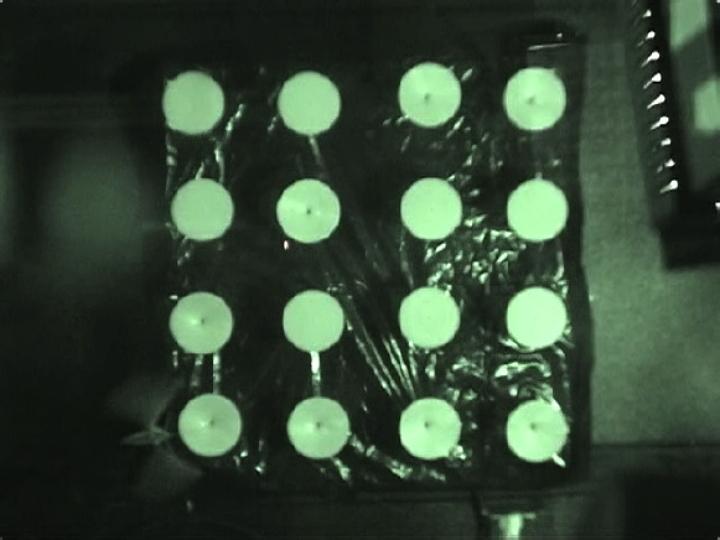 Ecologists have long understood the importance of flower shape and how animal pollinators have affected the evolution of floral design traits, but studying the impact of flower shape on pollinator behavior is a difficult proposition.
Ecologists have long understood the importance of flower shape and how animal pollinators have affected the evolution of floral design traits, but studying the impact of flower shape on pollinator behavior is a difficult proposition.
In the past, ecologists were forced to actually breed flowers which featured the shapes they required or to use paper maché to create the needed shape.
Eric Octavio Campos is a graduate student at the Department of Biology Daniel Lab within the University of Washington, who earned his Bachelor’s degree in Biology from UC Berkeley where he worked with Roy Caldwell on stomatopod locomotion. His work is now focused on the interactions between floral form and behavioral choice in Manduca sexta, or the hawkmoth, and he uses 3D printed artificial flowers to quantify his findings.
 The 3D printed flowers, one with a curve reminiscent of a trumpet and one which looks like a flat disc with a hole in the center, were filled with sugar water to take the place of actual flower nectar. The prints were arranged on a square grid, and as hawkmoths flew around the grid for five minutes, the team could determine which of the flower shapes was more attractive to the moths.
The 3D printed flowers, one with a curve reminiscent of a trumpet and one which looks like a flat disc with a hole in the center, were filled with sugar water to take the place of actual flower nectar. The prints were arranged on a square grid, and as hawkmoths flew around the grid for five minutes, the team could determine which of the flower shapes was more attractive to the moths.
Campos says the team discovered that the moths were considerably more successful when attempting to feed from the curved, rather than the flat, 3D printed flowers. The result suggests that the nocturnal hawkmoth may use touch rather than visual input to find sources of nectar.
“With their long proboscis and nocturnal habits, finding a flower’s nectar source isn’t easy for the fist-sized hawkmoths we used in our study. Imagine being given a garden hose that’s almost twice your height in length. Now imagine trying to thread the other end through a hole that’s scarcely wider than the hose itself – at dusk as the sun is setting or at night during a full moon,” Campos says. “It may seem like a silly proposition, but it’s not too far off from what night-flying hawkmoths have to contend with to get a meal.”
And he adds that 3D printing is critical to the work. Campos says the technology allows his team to study animal pollinators–and their evolutionary role–by exploring the interactions between floral form and pollinator performance. The ability to manipulate “mathematically-specified flower morphology” lets the researchers investigate the role of minute, but potentially important, differences in how floral form relates to pollinator foraging.
“The trouble is that, as a scientist, I would like a quantitative way in which to investigate flower shape and its supposed [effect] on pollinator foraging ability,” Campos says. “How can I describe flower shape using numbers instead of phrases such as, ‘funnel-like’ and ‘disk-like?’ The solution that my collaborators and I settle upon was to reduce the vast complexity of floral 3-dimensional shape into as few key ‘traits’ as possible and then describe those traits using a mathematical equation. If you can do that, then you essentially have an equation for numerically specifying any imaginable flower shape that you can think of. And the beauty of such an equation is that 3D printers can be used to make a real-life sculpture of any particular combination of shape ‘traits’ specified by the equation.”
Campos says 3D printing lets the team specify aspects of floral shape like length, width at the outer edge of the petals, width of the central nectar reservoir, and the degree of curvature of the petals. They then use that data to 3D print a plastic prototype of this ‘hypothetical’ flower.
“By carefully documenting the order in which these flowers are visited, and for how long, I can gain insights into how floral shape influences pollinator foraging ability!” Campos says. “Ultimately, I hope that my data can be used down the line to investigate how (if at all) animal visitation has influenced the evolution of flower shape diversity throughout the millions of years of flowering plant history…”
The authors of the paper, Shape matters: corolla curvature improves nectar discovery in the hawkmoth Manduca sexta, Campos, Harvey Bradshaw, and Daniel Thomas, published their work in the journal Functional Ecology.
Are you aware of any other scientific investigations which rely on 3D printing? Let us know in the 3D Printed Artificial Flowers forum thread on 3DPB.com.
Subscribe to Our Email Newsletter
Stay up-to-date on all the latest news from the 3D printing industry and receive information and offers from third party vendors.
Print Services
Upload your 3D Models and get them printed quickly and efficiently.
You May Also Like
The Market and Industry Potential of Multi-Material 3D and 4D Printing in Additive Electronics
Additive manufacturing leverages computer-based software to create components for products by depositing either dielectric or conductive materials, layer by layer, into different geometric shapes. Since its birth in the 1980s,...
3DPOD 262: Bio-inspired Design for AM with Dhruv Bhate, Arizona State University
Dhruv Bhate is an associate professor at Arizona State University. There, he looks at structures, materials, and design. Previously, he worked at PADT as well as in the semiconductor and...
3DPOD 261: Tooling and Cooling for AM with Jason Murphy, NXC MFG
Jason Murphy´s NXC MFG (Next Chapter Manufacturing) is not a generalist service; instead, the company specializes in making tooling. Using LPBF and binder jet, the company produces some of the...
3DPOD 260: John Hart on VulcanForms, MIT, Desktop Metal and More
John Hart is a Professor at MIT; he´s also the director of the Laboratory for Manufacturing and Productivity as well as the director of the Center for Advanced Production Technologies....




































